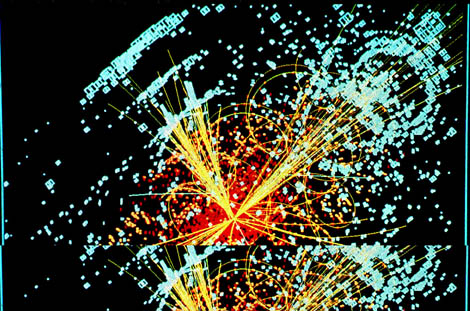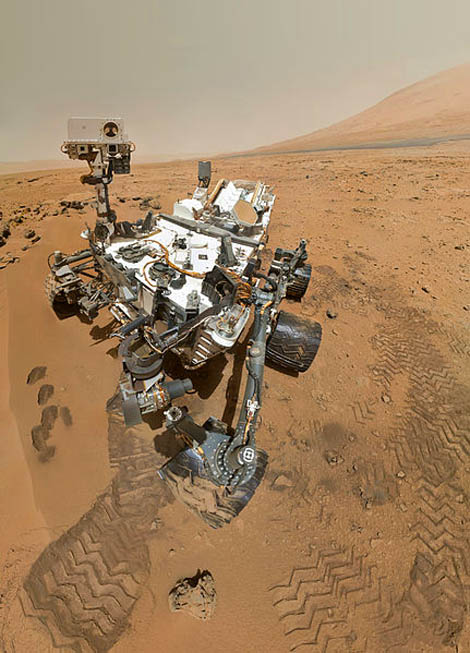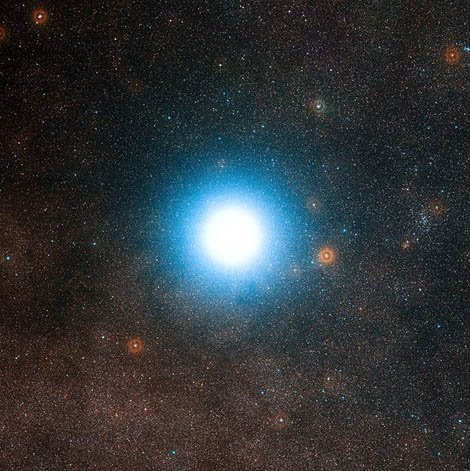 What were the most relevant scientific results in the field of Astronomy, obtained in 2012?
What were the most relevant scientific results in the field of Astronomy, obtained in 2012?
This text presents a selection of those that, in our view, were of greatest importance. Of course, a selection is always subjective, based on a huge pool of information. In 2012, more than 12000 scientific articles were published in the field of Astronomy and Astrophysics.
So, what is presented here is a personal choice. Others would be possible. And our choice falls on three events and/or outcomes, each involving different world institutions: European Organization for Nuclear Research (CERN), the North American Space Agency (NASA) and the European Southern Observatory (ESO).
This choice is purposely shared by several transnational institutions as a mark of what research in this area is today: a worldwide effort, involving many human and technological resources.
CERN and the Higgs boson
 On July 4, CERN announced the discovery of a new particle with characteristics predicted by an English physicist Peter Ware Higgs nearly 50 years ago, and which has become universally known as higgs boson.
On July 4, CERN announced the discovery of a new particle with characteristics predicted by an English physicist Peter Ware Higgs nearly 50 years ago, and which has become universally known as higgs boson.
Not being a result directly linked to Astronomy, it has a huge impact on what we think we know today about the formation of the Universe. And one of the problems that resided in this explanation was (or is) the existence of particles of different masses. The Higgs boson, if confirmed, is the piece that makes it possible to justify the mass of particles, that is, the Universe as we know it.
One of the difficulties in detecting this boson has to do not only with its high energy, but also with the fact that it has a very short lifespan.
This discovery (which should still be confirmed by more results) was obtained by the instrument of CERN Large Hadron Collider – LHC (more information in http://press.web.cern.ch/press-releases/2012/07/cern-experiments-observe-particle-consistent-long-sought-higgs-boson).
Curiosity landed on Mars
 On August 6th, at 5 am (Greenwich Mean Time), the Rover Curiosity landed on Mars (more specifically at Crater Gale), in a mission under the responsibility of NASA, which had left Cape Canaveral on November 26, 2011, with the general objective of studying the Martian soil.
On August 6th, at 5 am (Greenwich Mean Time), the Rover Curiosity landed on Mars (more specifically at Crater Gale), in a mission under the responsibility of NASA, which had left Cape Canaveral on November 26, 2011, with the general objective of studying the Martian soil.
This space mission also had specific objectives that were divided into different aspects: search for clues to the possibility that Mars, at one time, was a place with Life; analysis of the chemical and mineralogical composition of the Martian soil; study of the role that water had/has on the planet's surface; analysis of radiation received at the surface from the outside, for example from the Sun; etc..
This Rover is an authentic mobile laboratory, the results of which will allow us to answer many of the doubts that currently arise about the Red Planet.
The clarification of these doubts can be very important when the already famous and often announced manned trip to Mars is equated (more information in http://mars.nasa.gov/msl/).
An Earth-like planet orbiting the alpha star Centauri B
On October 16th, a group of astronomers (which includes Portuguese) announced the discovery of a planet orbiting one of the stars closest to us, alpha Centauri B.
What astronomers measured was the periodic variation in the star's motion, a variation that we can associate with a perturbation in the star's velocity caused by a planet slightly larger than Earth's mass.
In this case, the disturbance in the star's motion is in the order of 2 km/h, which corresponds to the running speed of a 4-year-old child. The extraordinary thing was that it detected this tiny disturbance at 4 light years, which is the distance that separates us from alpha Centauri B.
 This discovery was made using an ESO 3.6 meter telescope and is a sign of hope in the future detection of extrasolar planets with Earth-like conditions (more information in http://www.eso.org/public/portugal/news/eso1241/).
This discovery was made using an ESO 3.6 meter telescope and is a sign of hope in the future detection of extrasolar planets with Earth-like conditions (more information in http://www.eso.org/public/portugal/news/eso1241/).
Here are three examples of the extraordinary interest that Astronomy aroused in the year 2012. To repeat myself, there would be as many choices as astronomers.
One thing is certain: Astronomy can eagerly await the results that will come in 2013. Yes, because it is not just any Mayan calendar, cosmic alignment, unbroken asteroid or any other quackery that will prevent humanity from living another year full of scientific discoveries . So… Happy 2013 to everyone.
Author João Fernandes is director of the Astronomical Observatory and Professor at the Department of Mathematics at UC.
Image Credit: NASA/JPL-Caltech/Malin Space Science Systems


















Comments